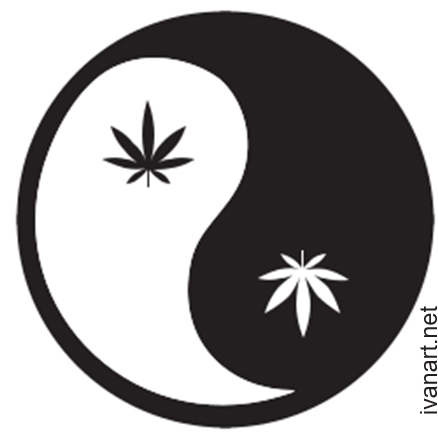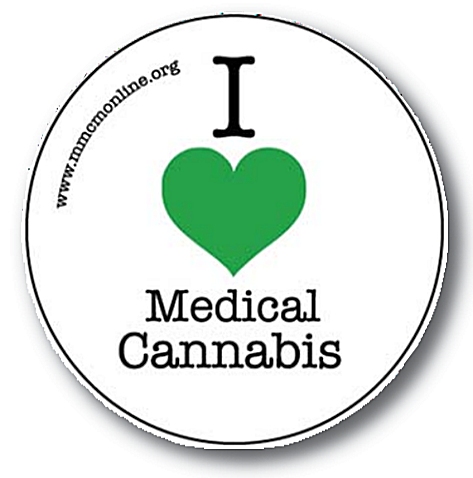
Post-Traumatic Stress Disorder
With Veterans at Risk, Change is Necessary, but Progress is Slow
By Mary Lou Smart
In 1933, the repeal of America’s first Prohibition came with the ratification of the 21st Amendment, during a time of economic hardship when it made good sense to admit failure and face reality.
In Cannabinomics: The Marijuana Policy Tipping Point, Dr. Chris Fichtner argues that three trajectories — policy reform, the whopping cost to society of a drug war, and the intelligence of regulating an emerging economy — are merging to make reform inevitable.
Not too long ago, Fichtner’s theories might have seemed extreme, but as more and more people learn about and begin to use medical cannabis, acceptance of the plant as a natural health alternative is definitely becoming wide- spread.
Unlike the federal government, which
prints its own money and manages to grow
even during recessions, state and local
governments are feeling the
pain of enormous budget cuts. As
state legislators seek new sources
of rev- enue, the idea that cannabis should be regulated and taxed
is no longer far-fetched. Public opinion supports reform, as
the benefit of medical cannabis is
now being seen by an incredibly large audience. To date,
16 states and the
District of Columbia have adopted
medical cannabis pro- grams, and many
more are considering legislation.
Success in treating post-traumatic stress disorder (PTSD), one of many conditions that responds favorably to cannabis therapy, reinforces the argument that change is necessary.
A psychiatrist with clinical and administrative public men- tal health experience in federal, state and county systems, Fichtner served as a state mental health director in Illinois for five years. He also worked for the United States Department of Veterans Affairs (VA), running a PTSD clinic for three years and a psychiatry service for two years. He has considerable clinical experience. He points out that the Food and Drug Administration (FDA) has approved only two drugs — Zoloft and Paxil — for the treatment of PTSD. Other drugs that come into the equa- tion of standard treatment for patients suffering from PTSD have FDA approval for other issues such as pain, bipolar disorder and psychosis. The resulting cocktail of what can be four, five or more drugs, make his rationale to be not as much about the benefit of cannabis, but, rather, in light of a great deal of information about the problems with treating veterans with what appears to be an overload of pharmaceuticals, why not give a natural alternative a try?
“Everything that you are using, except maybe one medica- tion, will be off-label
for post-traumatic stress disorder,”
In 2011, a The New York
Times article written by James Dao
reviewed the cornucopia
of prescription drugs dispensed to soldiers
returning from Iraq and Afghanistan with PTSD diagnoses, and the problems
these veterans experience as they become reacquainted
with civilian life. Many, also being
treated for anxiety, depression
and pain, are mixing, matching and
self-medicating with a toxic
brew of opioid painkillers like Percocet
and OxyContin and benzodiazepines like Xanax. With easy access to the likes of Ativan,
Adderall Ambien, Celexa, Effexor, Elavil, Haldol, Klonopin, Lunesta, Prozac, Paxil,
Restoril, Risperdal, Ritalin, Seroquel, Trazodone, Valium, Wellbutrin,
Xanax and Zoloft, many
who are trying so hard to cope
end up dying. These deaths are often
labeled as accidental.
he said. “They are FDA-approved, but for other condi- tions, and there are zero controlled-data studies support- ing the use of the combinations being regularly used to treat PTSD.”
And while numerous side effects including suicidal thoughts, weight gain, cholesterol elevation, blood sugar elevation and long-term metabolic problems might not be reason enough to not use a medication, a natural solution might not be a bad idea either.
“I am not trying to bad mouth my profession, but by the time you get into the realm of where practice really occurs, it is quite a ways removed from strict evidence-based prac- tice,” Fichtner said. “When you are that far off the map, why wouldn’t you be interested in learning whether or not herbal cannabis might be effective for the same symp- toms?”
PTSD is considered the fourth most common psychiatric disorder, affecting 10 percent of all men and 18 percent of all women, with rates much higher in high-trauma locales such as war zones or ghettos. PTSD is something that many suffer from after experiencing or witnessing trauma. The National Center for PTSD, operating within the VA, estimates that up to 8 percent of the country’s population will have PTSD at some point in their lives, and that approximately 5.2 million adults will have PTSD during any given year.
Combat injuries inflicted on military veterans make them much more likely to experience PTSD. According to sta- tistics assembled by the Pew Research Center, one out of every 10 veterans alive today was seriously injured at some point while serving in the military; three-quarters of those injuries occurred in combat, and those with signifi- cant service-related injuries are more than three times as likely as other veterans to experience PTSD. Estimates put troops returning from Iraq and Afghanistan with PTSD, depression and traumatic brain injury at well over 300,000.
The VA looks to a combination of pharmacology and counseling to treat veterans, but all indications are that standard treatment might need some fine tuning.
In 2011, a New York Times article written by James Dao reviewed the cornucopia of prescription drugs dispensed to soldiers returning from Iraq and Afghanistan with PTSD diagnoses, and the problems these veterans experi- ence as they become reacquainted with civilian life.
Many, also being treated for anxiety, depression and pain, are mixing, matching and self-medicating with a toxic brew of opioid painkillers like Percocet and OxyContin and benzodiazepines like Xanax. With easy access to the likes of Ativan, Adderall Ambien, Celexa, Effexor, Elavil, Haldol, Klonopin, Lunesta, Prozac, Paxil, Restoril, Risperdal, Ritalin, Seroquel, Trazodone, Valium, Wellbutrin, Xanax and Zoloft, many who are trying so hard to cope end up dying. These deaths are often labeled as accidental.
Partly as a result of this article, the VA launched a study into the boatload of drugs being thrown at veterans diag- nosed with PTSD. Published in The Journal of the American Medical Association in March 2012, the study revealed that veterans being treated for PTSD are more likely to be prescribed powerful pain killers than veterans being treated for pain.
For decades, the VA has sent returning vets out on the streets with loads of prescription medications. Its own per- sonnel report a shortage of counselors to treat veterans and a lack of resources to track the multiple medications. Often labeled overdoses, suicides are skyrocketing, and drug addiction from these meds is causing a whole raft of other problems.
Although in recent directives it acknowledges that veter- ans in states with medical marijuana programs will be per- mitted to use cannabis in tandem with medical treatment offered through the VA, for the most part this federal enti- ty refuses to acknowledge the medicinal benefit of cannabis.
In the United States, the federal
government continues to classify marijuana within the Controlled Substances
Act as a Schedule I drug with no medical benefit, even as
the list
of federal agencies either
recognizing or recommend- ing cannabis
for medical applications grows longer. In
2011, for instance, the
National Cancer Institute, a divi- sion
of the U.S. Department of Health and Human Services, added cannabis to its list of Complementary
Alternative Medicines. The federal agencies charged with keeping the Drug War gravy train alive, including the Drug Enforcement Agency (DEA) and the National Institute on Drug Abuse (NIDA), are in the budget-protec- tion business. Marijuana’s scheduling placement allows the federal government to apply different criteria to the plant that’s never killed anyone than to dangerous phar- maceuticals, and to ignore evidenced-based scientific data.
In other countries, governments are reforming health care policies in light of clinical studies that point to the endo- cannabinoid system’s strong role in regulating, among other things, emotions.
Raphael Mechoulam, an Israeli professor of medicinal chemistry and natural products at the Hebrew University of Jerusalem in Israel, has been studying the chemistry and pharmacology of cannabinoids for over 40 years. He speaks about the shortfall of drug therapy.
“It has been suggested that pharmacological treatments in psychiatry have been overly reliant on neurotransmitter systems and their agonists,” he said. “In the last several decades, advances in psychopharmacology have reduced side effects but have failed to lead to major disease improvement. The endocannabinoid system may shed new light on the physiological basis of psychiatric diseases leading to new and more effective treatments.”
In New Mexico, considerable research and patient testi- mony convinced lawmakers to include PTSD as the only psychiatric indication qualifying for a recommendation in the state’s medical cannabis program. Other states are following suit.
Bryan Krumm, a psychiatric nurse practitioner who helped to draft New Mexico’s medical cannabis legisla- tion, pushed for the addition of PTSD as a qualifying con- dition.
“In terms of safety, there is nothing that we have to offer pharmaceutically that can match the safety of cannabis,” he said. “In my own practice as a clinician, I have never come across a single pharmaceutical agent that is as well tolerated, and lacking in significant side effects, as cannabis.”
The greatest number of people qualifying for a recommen- dation in New Mexico have PTSD. Many of Krumm’s patients suffer from post-traumatic stress.
“I’ve seen some very significant benefits in helping with that, which go above and beyond what I’ve been able to do with just traditional pharmaceuticals,” he said. “Probably the vast majority of patients that I have in the program still require pharmaceutical treatment. But quite often the traditional pharmaceuticals are not able to man- age the anxiety, not able to stop the nightmares, the flash- backs, the constant, recurring thoughts that people get, and that’s where cannabis is very helpful.”
Animal studies point to hyperactivation of the amygdala, the part of the brain involved in emotional regulation. Shown in research to perform a primary role in the pro- cessing and memory of emotional reactions, the amyg- dalae have a large number of cannabinoid receptors, as do
other areas of the brain feeding into them.
“There has been very little research done,” he said. “They (National
Institute of Health (NIH) and NIDA) tend to refuse any type of research that’s looking into a benefit of
marijuana. Proposals for grants
looking into any kind of ben- efit
get rejected outright. They say that because it has no accepted medical use, they don’t have the research
to demonstrate that it’s safe.”
“Activating those receptors helps turn off or slow down the hyperactivity,” Krumm said. “So we see things like a decrease in anxiety, a lessening of depression. With patients with chronic suicidal behavior, we’ve seen it take away suicidality when they would not remit with tradi- tional pharmaceuticals. Another big thing, with PTSD we see mood swings with irritability and anger. Cannabis really helps to control that. It has the advantage of work- ing very quickly when working with the inhaled route in being able to suppress those types of emotions and allow people to function better.”
Krumm’s beef is that, despite widespread knowledge that veterans are medicating with cannabis to relieve suffering, the government uses the Controlled Substances Act’s Schedule I placement of cannabis to block research show- ing the beneficial aspect of the plant.
“There has been very little research done,” he said. “They (National Institute of Health (NIH) and NIDA) tend to refuse any type of research that’s looking into a benefit of marijuana. Proposals for grants looking into any kind of benefit get rejected outright. They say that because it has no accepted medical use, they don’t have the research to demonstrate that it’s safe.”
Dr. Donald Abrams, a cancer and integrative medicine specialist at the University of California, San Francisco, Osher Center for Integrative Medicine, provides integra- tive medicine consultations for cancer patients and has completed research in complementary and alternative therapies including mind-body treatments, botanical ther- apies, medical use of marijuana and traditional Chinese medicine herbal therapies. In addition to his role at the Osher center, he is chief of Hematology and Oncology at San Francisco General Hospital. He has been in the fore- front of HIV/AIDS research and treatment.
While he learned long ago to avoid approaching NIDA to fund studies, he was able to get it to supply cannabis for studies.
“It is known that the National Institute on Drug Abuse has a Congressional mandate to study “substances of abuse” as “substances of abuse” and not therapeutic agents,” he said. “Although they may not fund studies of cannabis as medicine, they will provide cannabis (as they are the only legal source) to investigators who get funding elsewhere, as we did with the University of California Center for Medicinal Cannabis Research.”
The Multidisciplinary Association for Psychedelic Studies (MAPS) is a non-profit research and educational organiza- tion that has attempted to get around the NIDA blockade on cannabis research by opening its own medical-marijua- na production facility for federally-approved research. This challenge has been playing out in court for a decade. NIDA, despite its own federal administrative law judge’s ruling in favor stating that it would be in the public’s inter- est to end the monopoly, is not budging an inch. Stalling challenges, NIDA protects its turf.
“The only way patients are going to get some sort of legal access is through state-level reform,” said Rick Doblin, Ph.D., executive director, MAPS. “We are continuing to sue the DEA in the U.S. Court of Appeals. They are likely to win for years to come, and even if we win, they’ll put something else out there and we will sue them again. Even if we win, we lose. Our failure to work on the federal level highlights both the lack of credibility of the DEA and NIDA and their active suppression of research. If we keep showing that we cannot make it federally, that they’ve blocked us, more people will support state-level reform.”
In September 2011 NIDA stopped the first clinical exami- nation on the benefits of cannabis for veterans suffering from PTSD. The three-month study would have been con- ducted by Dr. Sue Sisley, an assistant professor at the University of Arizona College of Medicine, and funded with the help of MAPS. The proposed study is designed to include a sample base of 50 veterans whose PTSD symp- toms are not improving with standard medical practices.
In the realm of Prohibition, NIDA stands for politics. Instead of supplying the research-grade product necessary for the triple-blind, placebo-controlled environment, NIDA opted to throw up another obstacle. Making it crys- tal clear that the battle has just begun, the rejection letter from Sarah Wattenberg, a senior advisor and review com- mittee chairperson, stated that reasons given for stopping the study “are not exhaustive and that a re-review of the proposal by the review committee is not limited to these issues.”
Sisley, who collaborated with MAPS in designing the study’s protocol, is discouraged.
“This was going to open a whole new dimension of additional science that had never been tackled in a comprehensive way,” she said. “The FDA hailed the study design as being exemplary, and they embraced it warmly.” For now, the study’s proponents have submitted a point-by-point rebuttal. Unlike the FDA, which responds to inquiries in a timely fashion, NIDA can take as long as it wants.
“We have this long list of veterans that so desperately want to participate in the study,” said Sisley. “They want to know the results, and they’re all in fear every day that they’re going to get busted for using it medically. That is what is so sad.”








